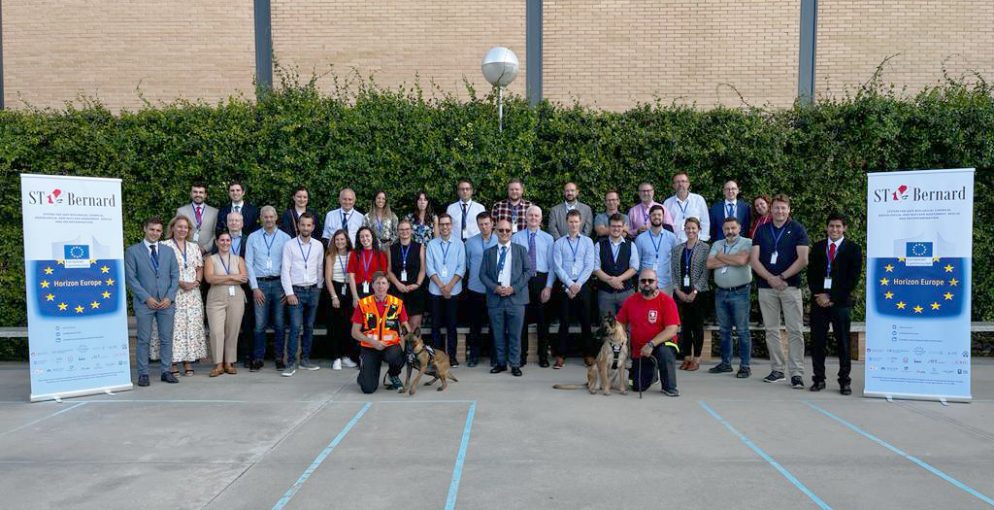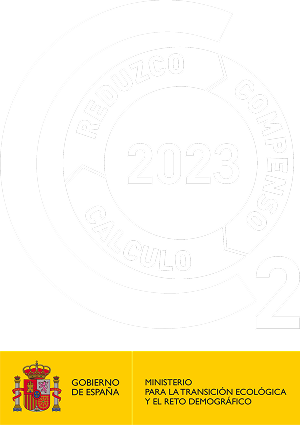- STBERNARD, with a budget of €6.7 million co-funded by the Horizon Europe Programme, will improve the safety of first responders in risk or emergency situations, while reducing the number and severity of casualties and mitigating environmental impact.
Valencia, 20 September 2023. – The kick-off meeting of the STBERNARD project was held yesterday in the town of Valdemoro in Madrid. Its main objective is to improve the safety of first responders in risk or emergency situations, while reducing the number and severity of casualties and mitigating the environmental impact, especially in situations of CBRN (chemical, biological, radiological and nuclear) threats in the port area. Safety to prevent fire or explosion risks in the handling of dangerous goods in bulk will also be of relevant.
STBERNARD is a project coordinated by the technology-based company Counterfog, in which the Fundación Valenciaport is actively participating, and which has a total budget of around 6.7 million euros, co-financed by the Horizon Europe Programme.
The project is based on the research and development of advanced technologies to address the aforementioned CBRN threats. These technologies will include rapid sensors to detect hazardous aerosols and vapours, as well as rapid decontamination methods. The focus is on bringing these technologies to a more advanced level of technological maturity, which will allow them to be ready for deployment in operational environments. These technologies are expected to enable rapid detection of CBRN threats and to be portable, which would benefit responders and the general public in the event of such an emergency. In addition, mass decontamination of infrastructures and vehicles will be addressed, using aerosol-based technologies.
An additional aspect of this initiative is the analysis of the risks associated with CBRN threats in rescue and recovery operations. It is proposed to develop a modular artificial intelligence tool to generate specific operating procedures for first responders working in such emergencies. These procedures and tools would significantly increase the safety of emergency teams, reducing the need to enter contaminated areas and minimising exposure.
To achieve all these results, the project will draw on the extensive experience of its 19 partners: Counterfog EBT of the UAH (coordinator); Universidad de Alcalá; Fundación para la Investigación Biomédica del Hospital Universitario Príncipe de Asturia; National University of Ireland Galway; Austrian Institute of Technology; Wojskowa Akademia Techniczna Im. Jaroslawa Da; Ustav Anorganicke Chemie AV CR VVI; Agencia Estatal Consejo Superior de Investigación; Kentro Meleton Asfaleias; Joanneum Research Forschungsgesellschaft; Mirion Technologies (MGPI) SAS; Saint George Tech Ltd; San Jorge Tecnológicas S.L.; Veproil Ltd; Ministry of Interior of Finland; Association Pegase; Escuela Española de Salvamento y Detección con Perros; Hellenic Police; and Fundación Valenciaport.
Role of the Fundación Valenciaport
The Fundación Valenciaport will play a multifaceted role in the project. On the one hand, by collaborating in the analysis and evaluation of requirements for first responders in emergencies with chemical, biological, radiological, nuclear and explosive conditions, and on the other hand, by organising a pilot test in the Port of Sagunto.
This test will consist of a demonstration of the technology based on reducing the risks of accidents in the handling of dangerous goods, such as fertilisers, fuels and other chemical products. Its experience and leadership in this type of projects in port environments will be fundamental to the success of this initiative.


